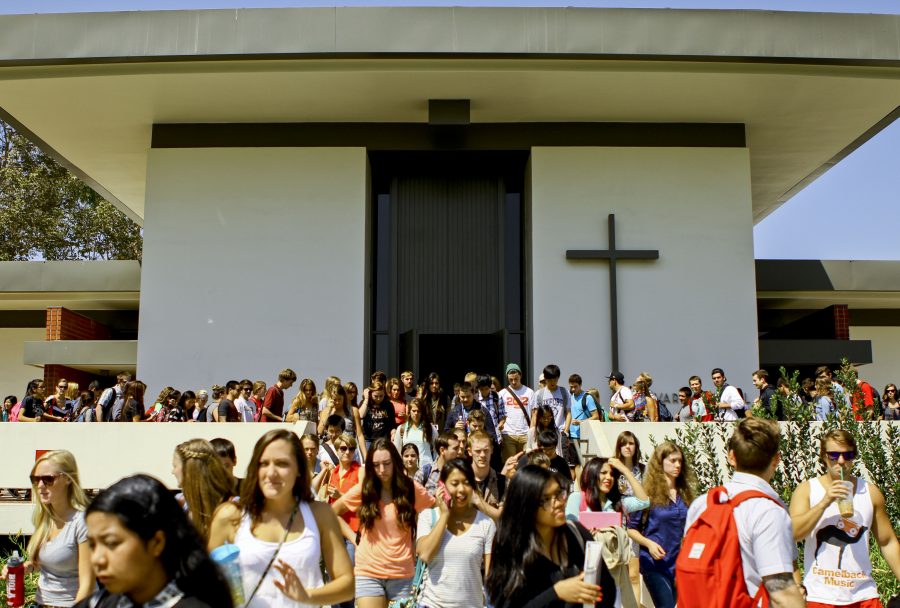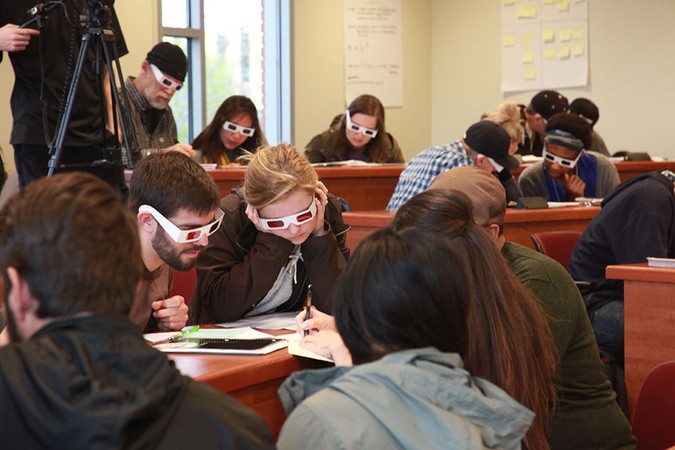Sophomore Julianna Plumb is an engineering physics major, who spent the past summer interning with the NASA Dryden Flight Research Center. The Dryden Center is located on the Edwards Air Force Base in Edwards, California, and focuses on advancing flight research through aerospace technology to revolutionize aviation.
Plumb competed with college engineering students from all over the country for an internship with NASA.
With only two semesters of physics, a five on the AP Calculus test, and a matrix laboratory (MATLAB) class, Plumb was worried about whether she would get the internship or not.
“I did not feel confident in my qualifications,” said Plumb.
However, those qualifications – as well as two previous internships with NASA – landed her a third, more professional opportunity with the prestigious organization.
Plumb worked in the aerodynamics research branch, a job that entailed a large extent of knowledge about flight data. Working with the Stratospheric Observatory for Infrared Astronomy project (SOFIA), Plumb had the opportunity to work with a 747SP aircraft with a 17 metric-ton infrared telescope system. Her particular focus was on modifications for the telescope.
Biola’s science department played a crucial role in her ability to work on the SOFIA project.
“I worked with MATLAB all summer on many different projects. Having a solid knowledge of all the basic functions of MATLAB made my learning curve much less steep and made it easier for me to simply jump into my project,” said Plumb.
This strong foundation in data analysis and presentation extensively prepared Plumb to work in a highly complex field.
Plumb’s affiliation with NASA began nearly three years ago when her aunt informed her about a newly created program called the Interdisciplinary National Science Project Incorporating Research and Education Experience (INSPIRE). This program is designed for high school students who are interested in science, technology, engineering, and mathematics. Plumb decided to apply after meeting the grade requirements, and was accepted for her first internship.
Plumb’s first experience with NASA involved working with F-18 Hornet aircrafts used by the Navy and the Marine Corps.
This experience led her to re-apply the next summer. However, it was much more competitive.
“I’m not sure how competitive this first internship was. The program was so new that I doubt that there was too much publicity about it,” said Plumb.
Plumb’s acceptance into the program for the second year sealed the deal for her future.
“I put a fleece out for God and said, ‘Okay God, if I get this internship I’ll go into aerospace engineering,’” said Plumb.
Coming into college, Plumb has been able to pursue her aerospace engineering career at full-throttle.
Not only did Plumb advance from the INSPIRE team to a NASA internship, but her projects progressively launched to higher heights. The SOFIA project allowed Plumb to accelerate in her understanding of re-baselining aircrafts, as well as comparing the unmodified 747SP to the SOFIA aircraft. This state-of-the-art aircraft flies at altitudes above 40,000 feet, greatly enhancing the ability to study the earth.
The Dryden Center implements and highly advocates the importance of education as the platform for discovery for the future, according to their mission statement. For Plumb, it has done just that.
“Working at Dryden has shown me how much I truly love the applications of aerospace and aeronautical engineering. The plan at the moment is to continue interning with Dryden during the summer until I graduate, and then to hopefully work at Dryden as an aerospace engineer,” said Plumb.
Plumb hopes to spend a total of three years at Biola to obtain her engineering physics degree, another two at a different university for an aerospace engineering degree, and then continue working for NASA.
Plumb’s contribution, as well as those of other aspiring students, to the Dryden Flight Research Center is helping them pioneer the future and to their perpetual vision, to fly to what others can only imagine.







